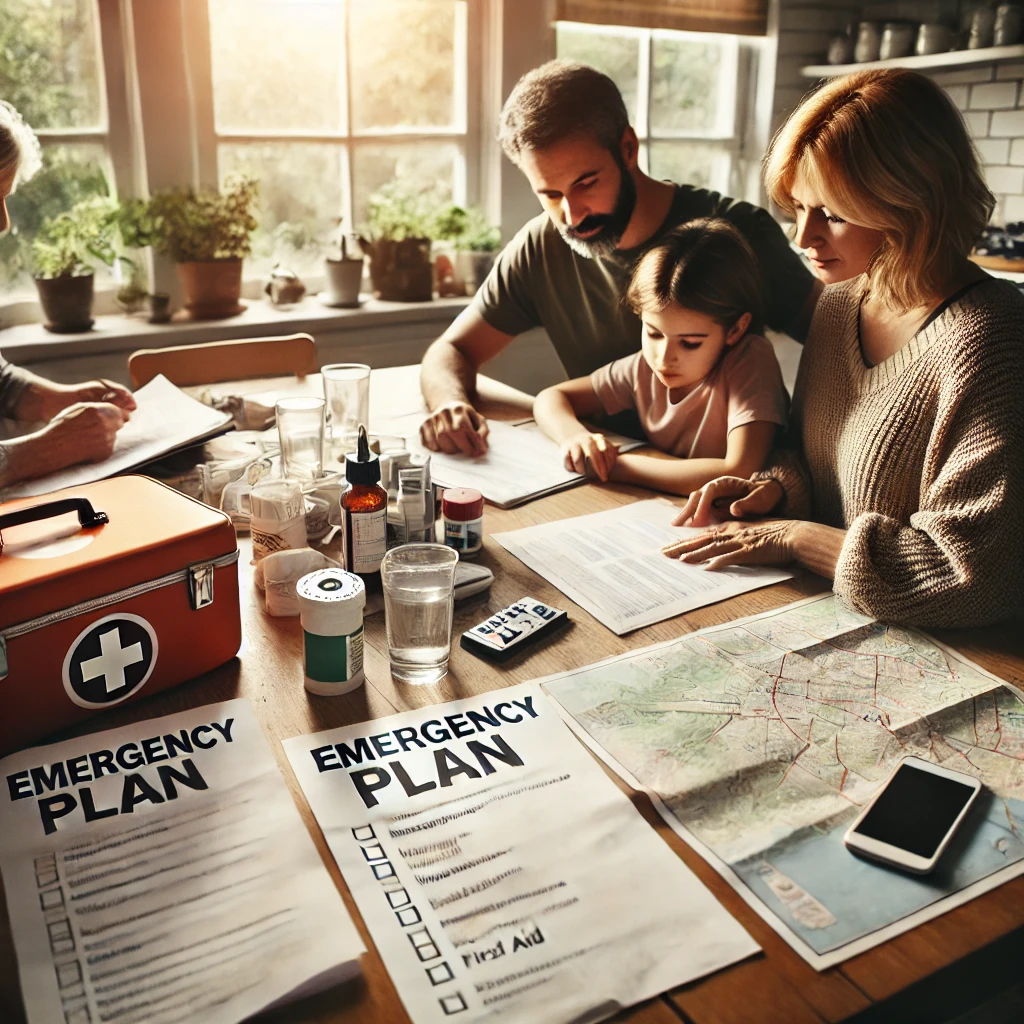1. Identify Potential Emergencies
The first step in creating a family emergency plan is identifying the types of emergencies that are most likely to happen in your area. This could include natural disasters like hurricanes, earthquakes, or floods, as well as more localized situations like power outages or medical emergencies. Tailoring your plan to specific risks ensures that you’re prepared for the most relevant scenarios.
Actionable Tip: Research the most common emergencies in your region and take note of local emergency resources or shelters. Knowing what to expect can help you tailor your emergency plan to fit the specific challenges of your area.
Pro Insight: Don’t forget to plan for personal emergencies, like a sudden medical issue or house fire. These can happen anywhere, so it’s important to have a general plan that works for a variety of situations.
2. Create a Communication Strategy
During an emergency, communication is key. Your family should have a clear strategy for staying in touch and notifying each other of important updates. Make sure everyone knows who to contact first and how to do so. In case cell networks go down, have a backup plan, such as a pre-designated meeting spot or using a landline phone.
Actionable Tip: Designate an out-of-town family member or friend as a point of contact. In some emergencies, it may be easier to reach someone outside of the affected area. All family members should have this person’s contact information on hand.
Unique Insight: Text messaging often works when cell phone calls cannot go through during emergencies. Ensure family members know how to text and remind them to keep their phones charged or have a portable charger ready.
3. Designate Emergency Meeting Places
Establishing clear meeting places is essential in case your family gets separated during an emergency. Choose two or three meeting locations: one near your home, another outside your neighborhood, and a third outside your city or town in case of widespread evacuations.
Pro Tip: Make sure every family member knows the address of the meeting spots and how to get there, especially if you have teenagers or older kids who may be on their own when an emergency occurs.
Actionable Tip: Practice your evacuation route with your family, especially if you live in an area prone to natural disasters. Familiarity with the route will help everyone stay calm and organized in an emergency.
4. Prepare an Emergency Kit
Having a well-stocked emergency kit is a crucial part of any family emergency plan. This kit should contain enough supplies to last your family for at least 72 hours. Essential items include bottled water, non-perishable food, flashlights, batteries, a first aid kit, medications, and important documents like identification and insurance papers. Don't forget comfort items like blankets and activities to keep children occupied.
Actionable Tip: Customize your emergency kit to fit your family’s needs. For example, if you have pets, include food and supplies for them. If someone in your family takes daily medication, make sure you have a backup supply.
Pro Insight: Regularly check and update your emergency kit to ensure all items are current and in good condition. Replace expired food, batteries, and medications annually.
5. Teach Kids Emergency Skills
It’s important for kids to understand the emergency plan and know what to do if you’re not around. Teach them how to call 911, recognize emergency exits, and how to use emergency contacts. You can make this a fun and educational experience by turning it into a game or practice drill.
Actionable Tip: Role-play different emergency scenarios with your children, such as what to do in case of a fire or if they get separated. This helps them feel more prepared and less scared if something happens.
Unique Insight: Consider teaching older children basic first aid or CPR. These skills can be invaluable in an emergency and may even help save lives.
6. Review and Update the Plan Regularly
Once your family emergency plan is in place, it’s essential to review and update it regularly. Circumstances can change, such as new contact information, health needs, or even changes in your local environment that could affect the types of emergencies you may face. Make sure your family is always aware of the latest updates.
Actionable Tip: Set a reminder to review and practice your emergency plan at least once a year. This ensures that everyone stays familiar with the plan and can adjust to any changes.
Pro Insight: If you move to a new home or your family grows, make sure to update your emergency plan and kit to reflect your new circumstances.
Conclusion: Be Prepared, Stay Safe
Setting up a family emergency plan is an essential step in protecting your loved ones during unforeseen events. By identifying potential risks, establishing clear communication and meeting strategies, preparing an emergency kit, and involving your children in the process, you can ensure your family is ready for anything. Remember, a good emergency plan is one that’s regularly reviewed and practiced to keep it fresh in everyone’s mind.












